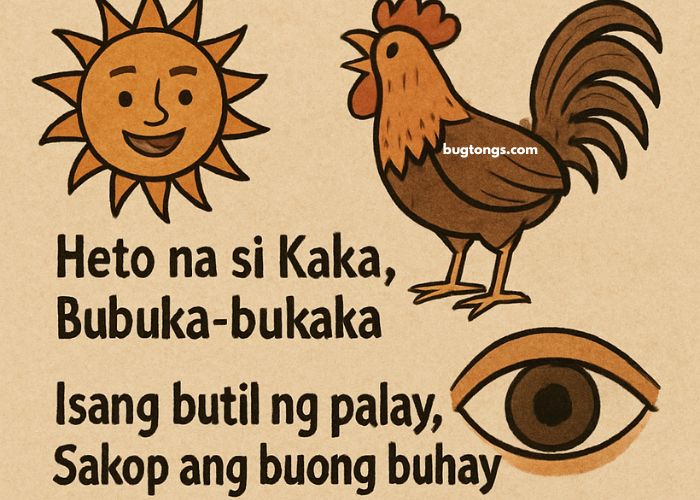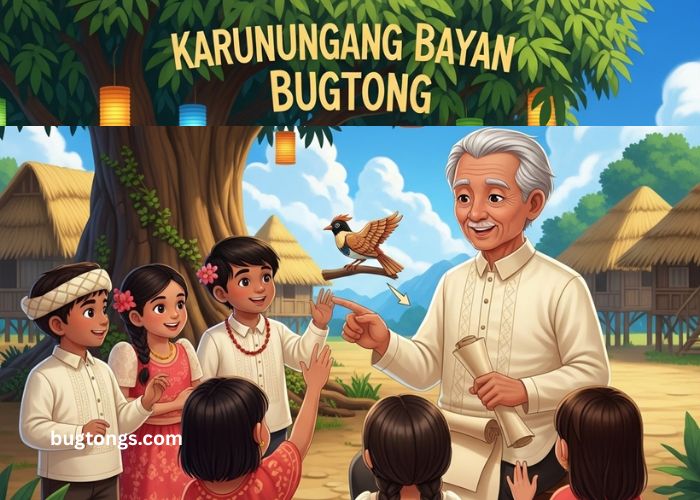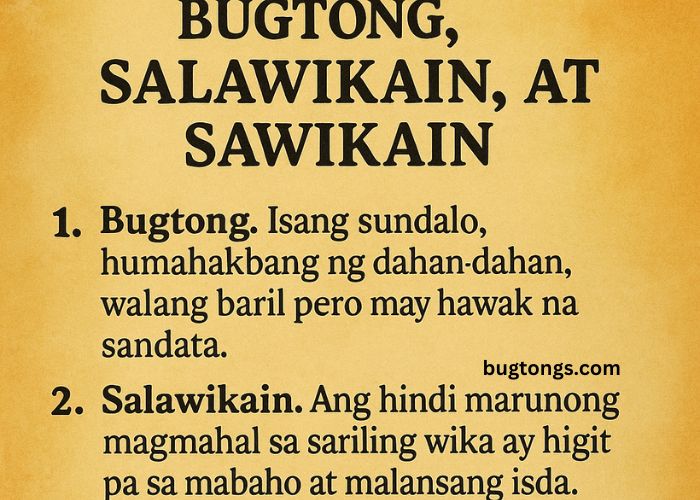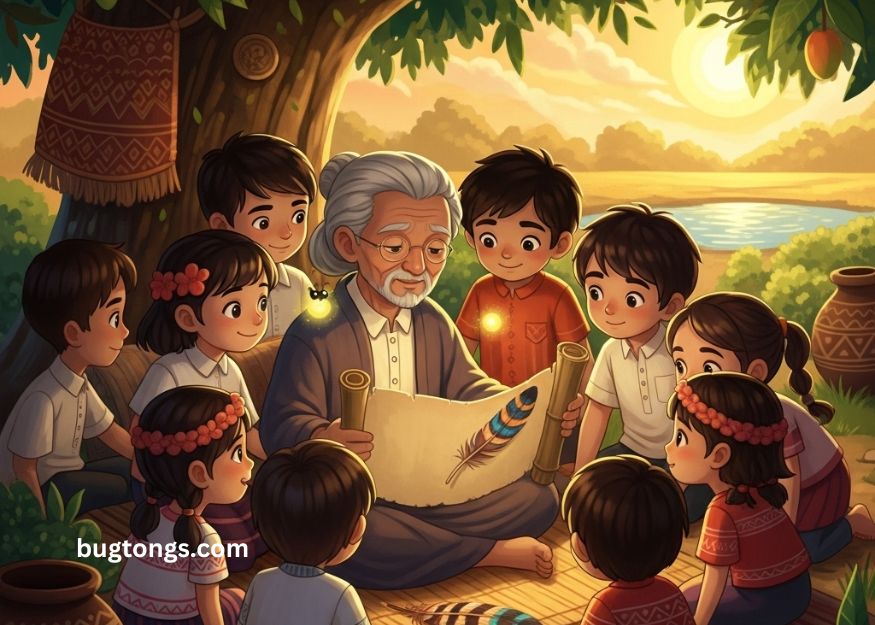A bugtong is a short riddle. It is like a question, but the answer is hidden. People guess the answer. Bugtong is fun and also helps us think. In the Philippines, children and adults love bugtong.
This post will show you dalawang halimbawa ng bugtong. That means two examples of riddles. We will talk about what they mean. We will also learn how to make bugtong.
Key Points:
- Bugtong are short riddles in Filipino.
- Dalawang halimbawa ng bugtong means two examples.
- Bugtong makes our brain smart and helps us learn.
Dalawang Halimbawa Ng Bugtong With Meaning
Let us look at two easy riddles. These riddles are in Filipino. But don’t worry—we will explain everything.
Riddle 1: Isang prinsesa, nakaupo sa tasa.
(One princess sits in a cup.)
Answer: Kasoy (Cashew)
This riddle talks about a fruit. The top part is the fruit (like a princess). The bottom part is like a cup (the seed). That is why the answer is kasoy.
Riddle 2: Dalawang batong itim, malayo ang nararating.
(Two black stones can see far.)
Answer: Mata (Eyes)
This riddle is about our eyes. Our eyes are round and dark. They help us see far places. So the answer is mata.
Table 1: Two Easy Riddles With Meaning
| Bugtong (Filipino) | English Meaning | Answer |
| Isang prinsesa, nakaupo sa tasa | A princess sits in a cup | Kasoy |
| Dalawang batong itim, malayo ang nararating | Two black stones can see far | Mata |
Paragraph: These dalawang halimbawa ng bugtong use simple words. But they are tricky. The first bugtong is about a fruit. The second is about the eyes. Both use fun pictures in our mind. This is why bugtong is fun to solve. It makes us think and laugh. These riddles are short, but they teach us a lot.
30 Halimbawa Ng Bugtong
- May binti, walang hita, may tuktok, walang mukha.
➤ Answer: Araw (Sun)
- Baboy ko sa pulo, ang balahibo’y pako.
➤ Answer: Langka (Jackfruit)
- Hindi tao, hindi hayop, kung uminom ay salup-salop.
➤ Answer: Posporo (Matchstick)
- Isang balong malalim, punong-puno ng patalim.
➤ Answer: Bibig (Mouth)
- Mataas kung nakaupo, mababa kung nakatayo.
➤ Answer: Aso (Dog)
- Isang prinsesa, nakaupo sa tasa.
➤ Answer: Kasoy (Cashew)
- May dalawang magkaibigan, laging nag-uusap kahit malayo sa isa’t isa.
➤ Answer: Telepono (Telephone)
- May bintana ngunit walang bubong, may pinto ngunit walang dingding.
➤ Answer: Sobre (Envelope)
- Laging nauuna, di mo nakikita.
➤ Answer: Guniguni (Imagination) - Hindi tao, hindi hayop, may ngipin pa sa loob.
➤ Answer: Siper (Zipper) - Pumapasok sa butas na di nabubutas.
➤ Answer: Susi (Key) - Araw-araw namamatay, ngunit hindi binubuwal.
➤ Answer: Kandila (Candle) - Bumbong kung liwanag, tabo kung gabi.
➤ Answer: Mata (Eyes) - Nagbibigay na, sinisipa pa.
➤ Answer: Bola (Ball) - Kay lapit-lapit na, di mo pa makita.
➤ Answer: Ilong (Nose) - May katawan, walang ulo, may leeg, walang buto.
➤ Answer: Bote (Bottle) - Pag maliit ay may buntot, pag malaki ay nawawala.
➤ Answer: Lobo (Balloon) - Bilog na hugis araw, kulay ginto ang laman.
➤ Answer: Itlog (Egg) - Lumuluha, walang mata.
➤ Answer: Gripo (Faucet) - Isang kawan ng kalabaw, sabay-sabay sa pag-alis, sabay-sabay sa pagdating.
➤ Answer: Ngipin (Teeth) - May dila, walang bibig.
➤ Answer: Sapatos (Shoe) - Kahoy na may bungang bakal.
➤ Answer: Baril (Gun) - May ulo, walang katawan; may paa, walang kamay.
➤ Answer: Ahas (Snake) - Puno na, naging bato pa.
➤ Answer: Saging (Banana)*
- Pag tumaas ay bumababa, pag bumaba ay tumataas.
➤ Answer: Timbangan (Weighing scale) - Isang bayani, walang sandata.
➤ Answer: Walis (Broom) - Gabi ay araw, araw ay gabi.
➤ Answer: Paniki (Bat) - Kapag pinukpok mo’y umiilaw.
➤ Answer: Posporo (Match) - Dalawang batong itim, malayo ang nararating.
➤ Answer: Mata (Eyes) - May ulo, may tiyan, walang katawan.
➤ Answer: Palayok (Pot)
What Makes A Bugtong Special?
A bugtong is not a normal question. It is like a puzzle. It sounds fun and makes us think. Let’s learn what bugtong looks like.
Here are some things that make bugtong special:
- It is short. Mostly 1 or 2 lines.
- It uses rhyme or rhythm.
- It talks about things we know.
- It hides the answer using simple words.
- It sounds like a poem.
Look at the two riddles again. The words are easy. But the meaning is tricky. That’s the fun part.
Table 2: Things That Make A Bugtong
| What It Has | What It Means | Example |
| Short lines | Just 1 or 2 sentences | “Isang prinsesa…” |
| Hidden meaning | You must guess what it really says | Princess = fruit |
| Easy words | Simple words for all ages | Tasa = cup |
| Rhyme or rhythm | Sounds like a song or poem | “Malayo ang nararating” |
Paragraph: Bugtong is short and fun. When we say it out loud, it sounds nice. That’s because it has rhythm. It also helps us learn new words. It is a great game to play in class or at home. You can make your own bugtong too!
Note: Bugtong should be fun for kids. Use easy and kind words only.
How To Make Your Own Bugtong
You can make your own bugtong. It is easy and fun. Here are the steps:
- At first, think about a simple thing. That could be a flower or home thing.
- Make a simple question about it’s features and do not mention the name.
- Use fun words.
- Make it short.
- You can also make the question with rhyme.
Example: If the answer is “banana,” you can say:
Habang kinain, lalong lumalaki.
(The more you eat it, the bigger it gets.)
Answer: Banana peel!
Making your own bugtong helps you be smart. You can play with your friends. You can even make a bugtong contest!
Reminder: When you make bugtong, make sure others can understand it too. Make it clear and fun.
Why Kids Love Bugtong
Kids love bugtong for many reasons. Bugtong makes kids laugh. It also helps them learn new words. Bugtong is like a game. It is short, fun, and full of surprise.
When children hear riddles, they start to guess. That makes their brain strong. Bugtong also helps kids talk and share ideas. It is a great way to learn and play together.
Here are some reasons why bugtong is great for kids:
- It improves kids reading and speaking.
- This game can make you smarter.
- It is fun with friends and family.
- It is part of Filipino tradition.
- It helps you think in a fun way.
Paragraph: Kids can be smart and become an intelligent by solving riddles. Because they want to be a first to give the answer. They start thinking quickly and find the answer. This makes them talk, laugh, and think. Bugtong is not just fun, it is also learning. Even teachers use bugtong in school. They know that bugtong is a good way to teach.
Conclusion
Bugtong is fun, smart, and very Filipino. In this blog post, we learned dalawang halimbawa ng bugtong. The first was about the fruit kasoy. The second was about our eyes. These riddles use easy words but have hidden answers.
We also learned how to make our own bugtong. You can play bugtong at home, in school, or with friends. It helps you think and speak better. Bugtong is simple, but it brings big fun.
FAQ’s
- What is bugtong?
A bugtong is a short riddle or puzzle.
- What does “dalawang halimbawa ng bugtong” mean?
It means “two examples of bugtong.”
- Why are bugtong fun?
They make us think and guess the answer.
- Can kids make bugtong too?
Yes! Kids can make easy and fun riddles.
- What is the answer to “Isang prinsesa…”?
The answer is kasoy (cashew).
- What is the answer to “Dalawang batong itim…”?
The answer is mata (eyes).
- How can bugtong help kids?
It helps them think, read, and talk better.
- Where can I find more bugtong?
You can find them in books or websites.
- Can I play bugtong with friends?
Yes! Bugtong is fun with friends and family.
- Is bugtong part of Filipino culture?
Yes, bugtong is a big part of Filipino tradition.




